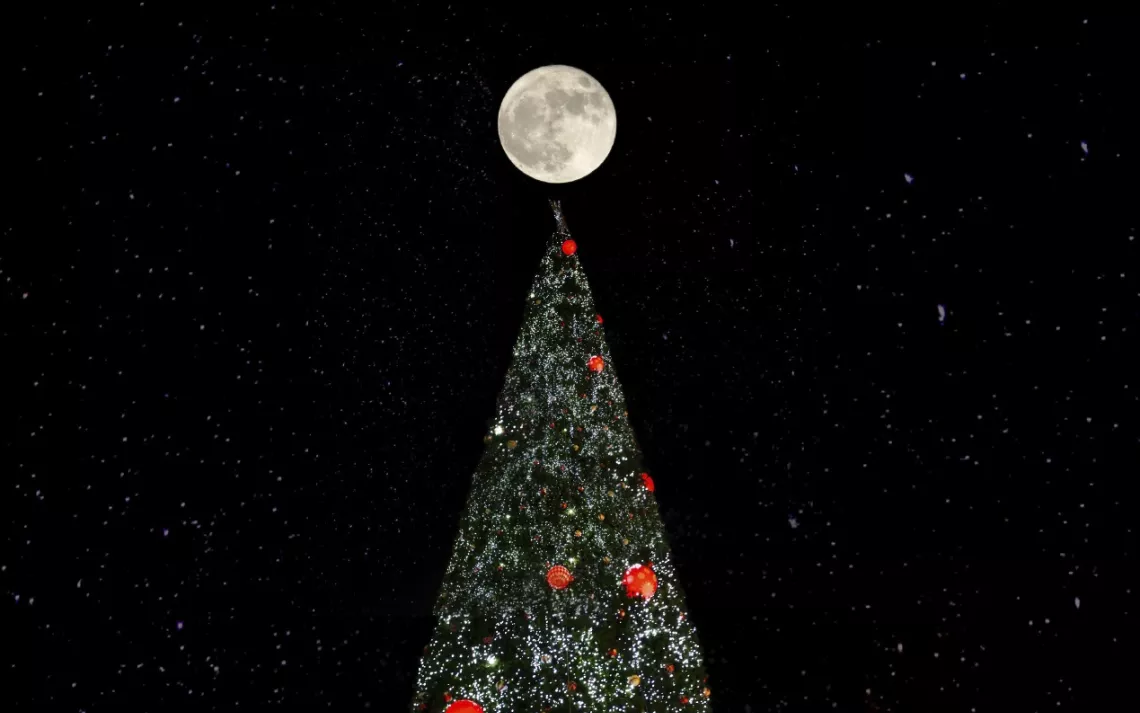Falling Stars and a Full Moon on Christmas

Photo by iStock/auimeesri
December is a good month to catch a falling star. The Geminid meteors will streak through the sky mid-month, with up to 120 meteors an hour overnight from December 13 to 14. But there will be numerous small meteor showers as well, and another substantial shower known as the Ursids will peak December 23.
If you like watching the planets, early morning is still the best time to catch a glimpse of them as they light the eastern sky before sunrise. The moon passes Jupiter on the 4th, Mars from the 5th to the 6th, and Venus on the 7th.
By the end of the year, some planets will finally return to the evening sky. Mercury makes its usual brief appearance along the western horizon soon after sunset. Look for it the last week of December, hanging quite low near the southwest and shining at magnitude -0.3. By December 31, Jupiter will be visible before midnight in the eastern sky, and you can spot it near the moon before festive fireworks obscure the view.
The winter solstice arrives at 4:48 UT on December 22, or December 21 in the States. Fall will be ushered out right before midnight in the east, at 11:48 EST (or 8:48 PST). Our first full day of winter will be on December 22.
Depending on how early you’re prodded out of bed on Christmas morning, you might see the Full Moon, which will occur precisely at 6:11 a.m. EST. It will be setting with Orion in the west and with Gemini the Twins following above. The Christmas Full Moon will look nearly as large the night before on Christmas Eve and should be a great help to Santa as he delivers his presents.
 The Magazine of The Sierra Club
The Magazine of The Sierra Club







